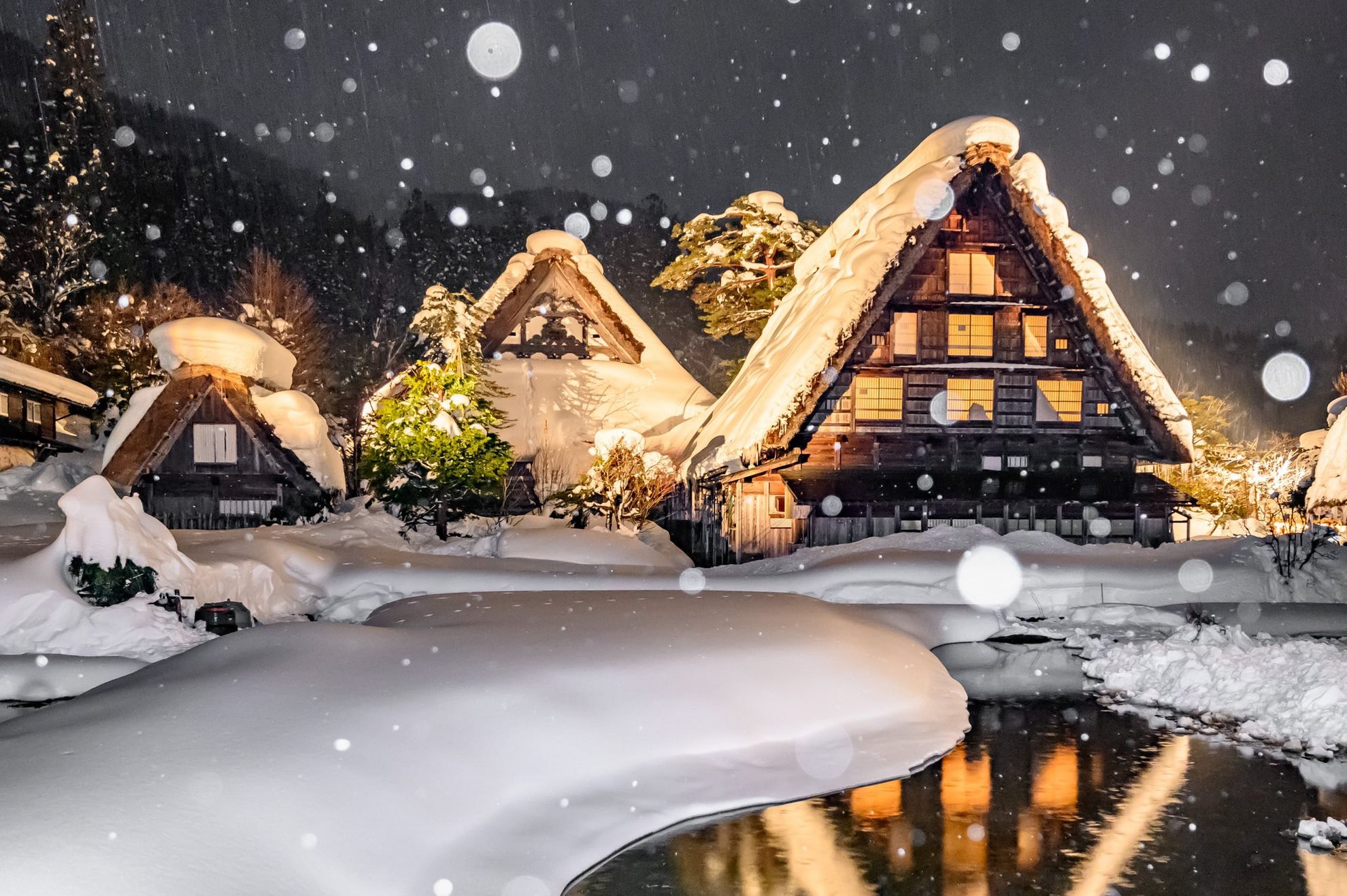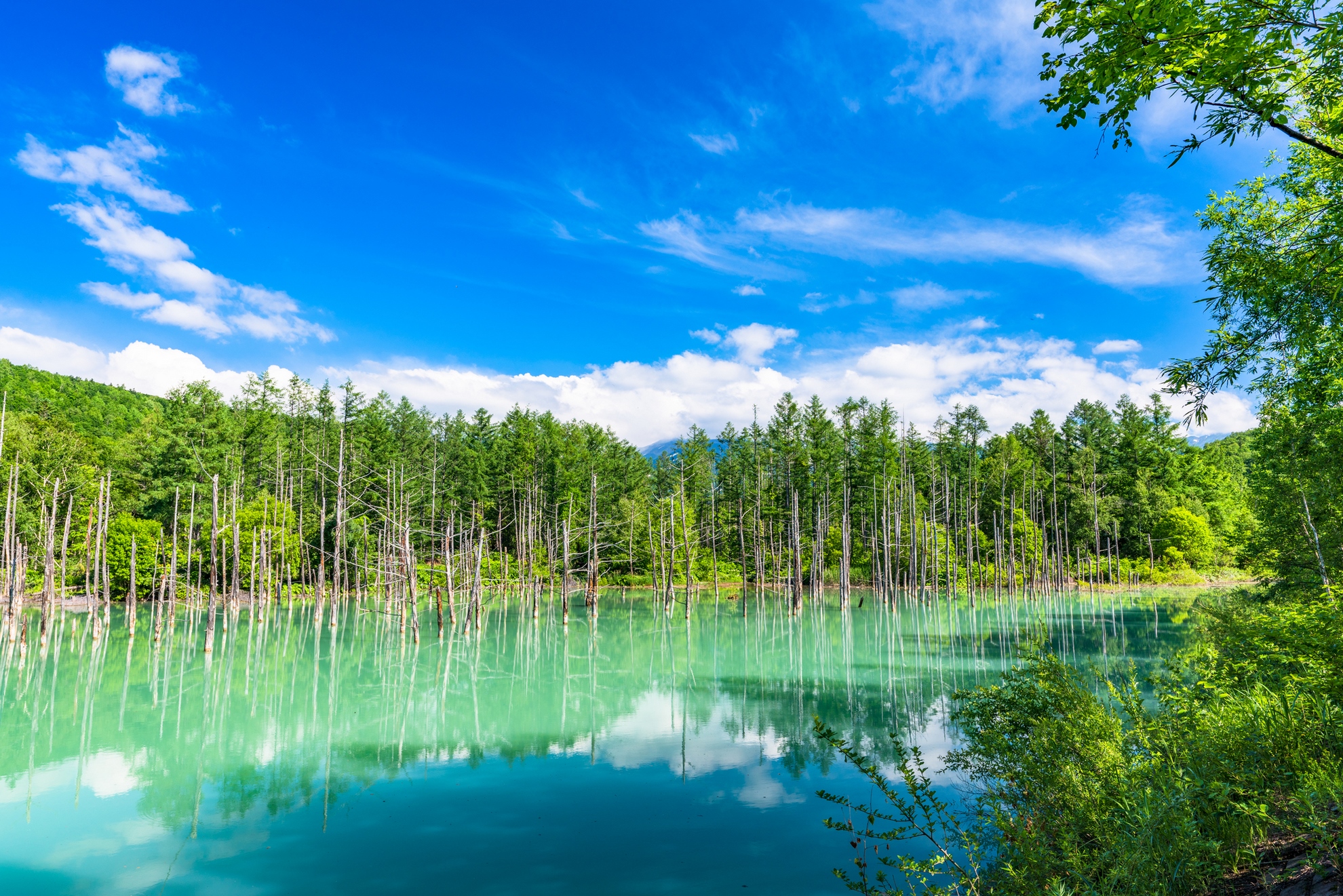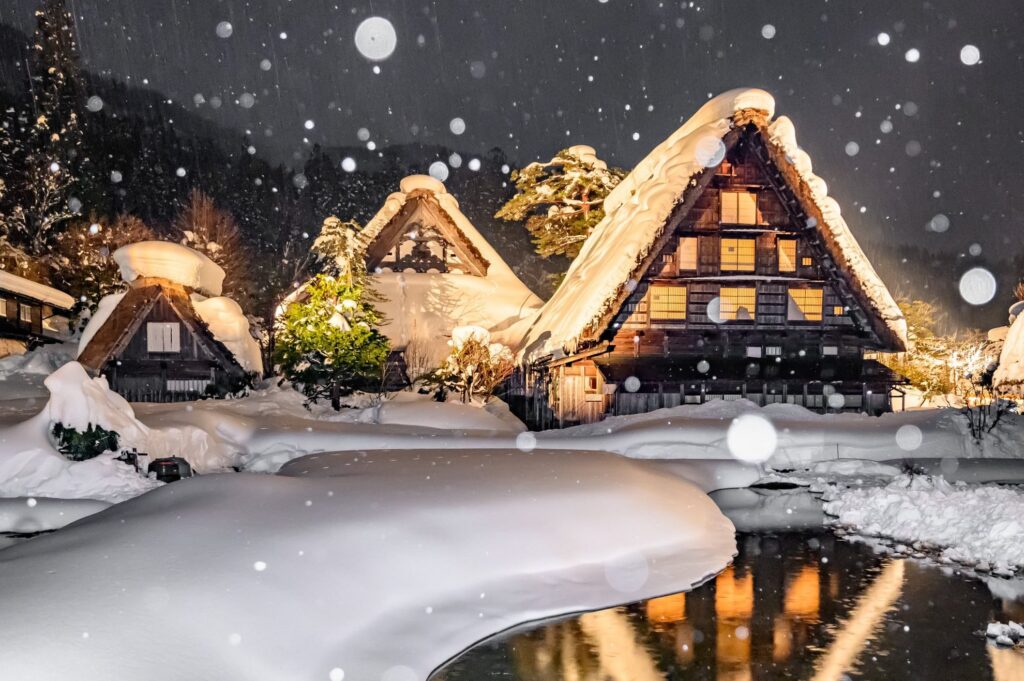
Shirakawa-go, a stunning UNESCO World Heritage site, invites international visitors to step into a timeless landscape defined by its unique Gassho-zukuri farmhouses. This ultimate travel guide offers comprehensive insights for planning your unforgettable journey, covering essential aspects from efficient transportation routes from major cities like Tokyo and Osaka to diverse accommodation options and fascinating cultural attractions. You will also discover crucial tips for experiencing Shirakawa-go’s magical winter, including the sought-after light-up event, ensuring a seamless and enriching adventure through this iconic Japanese village.
By delving into this guide, you will effortlessly overcome common challenges faced by first-time visitors, such as complex transportation logistics and navigating local customs, guaranteeing a smooth and stress-free trip. Prepare to capture awe-inspiring photographs of the picturesque Gassho-zukuri village, especially when blanketed in snow or illuminated by the enchanting winter light-up, transforming your visit into a truly memorable Japanese experience.

How can I navigate Shirakawa-go effortlessly and capture its magical winter beauty?

This guide provides comprehensive, clear advice to ensure your Shirakawa-go journey is seamless and picture-perfect.
What You Will Learn from This Article
- Accurate and detailed Shirakawa-go travel plans
- Optimal routes and travel passes from major Japanese cities
- Authentic accommodation options and essential booking strategies
- Maximizing your Shirakawa-go experience, especially during winter and the light-up event
- Shirakawa-go: Planning Your Unforgettable Japanese Village Escape
- Navigating Your Journey to Shirakawa-go from Major Cities
- Your Stay in Shirakawa-go: Traditional Homes and Modern Comforts
- Exploring Shirakawa-go's Charm: What to See and Do
- Unveiling Shirakawa-go's Magical Winter and Booking Tools
- Shirakawa-go: Your Ultimate Travel Guide for International Visitors - Frequently Asked Questions (FAQ)
- Shirakawa-go: Summary of Your Ultimate Travel Guide for International Visitors
Shirakawa-go: Planning Your Unforgettable Japanese Village Escape
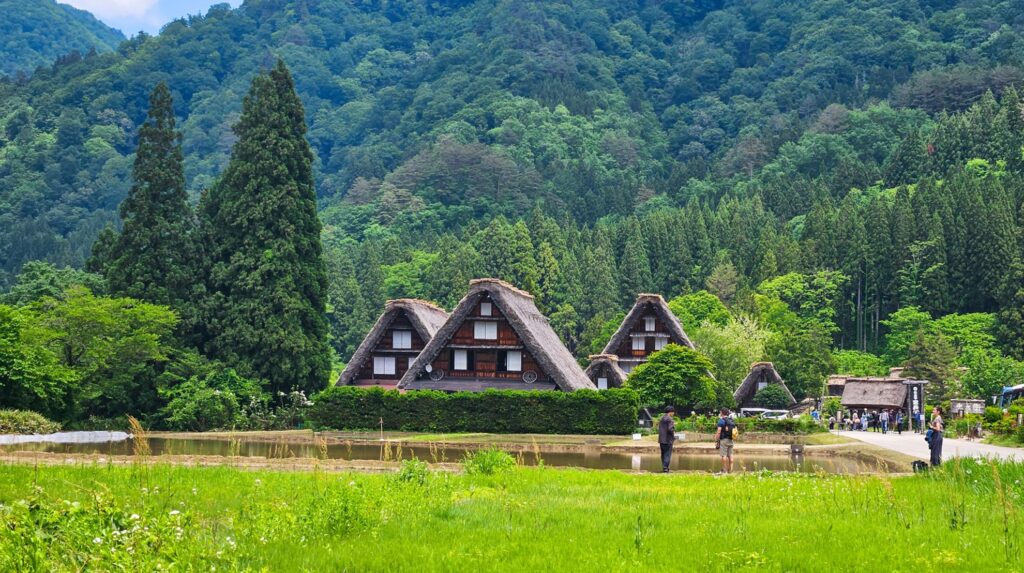
- Why Shirakawa-go is a Must-Visit
- Key Preparations for Your Trip
- Getting to Know the Unique Gassho-zukuri Houses
Shirakawa-go is not just a destination; it is an extraordinary cultural journey that will deeply enrich your Japan travel experience. Its unique charm lies in its timeless beauty and the profound resilience of its traditional way of life. To fully appreciate this World Heritage site, it’s important to understand why it is a must-visit destination, prepare adequately for your trip, and learn about the iconic Gassho-zukuri houses that define its landscape. By focusing on these initial steps, you ensure a smooth and rewarding exploration of Shirakawa-go’s serene and historically rich environment.
Why Shirakawa-go is a Must-Visit
Shirakawa-go stands out as a must-visit destination because it offers a truly unique glimpse into traditional Japanese rural life and architectural ingenuity. Designated a UNESCO World Heritage site in 1995, Shirakawa-go is globally recognized for its distinct Gassho-zukuri farmhouses and the enduring “Yui” communal spirit that has preserved them for centuries.
| Feature | Description |
|---|---|
| World Heritage Status | A living historical site recognized by UNESCO since 1995 |
| Unique Culture | Traditional “Yui” system of mutual assistance for roof re-thatching |
| Iconic Beauty | Picturesque Gassho-zukuri farmhouses nestled in a scenic valley |
| Immersive Experience | Offers a profound connection to Japan’s agricultural past and community |

Is Shirakawa-go really different from other beautiful places in Japan?

Absolutely, it offers an unparalleled blend of architectural genius and enduring community spirit.
This combination of cultural depth and breathtaking scenery makes Shirakawa-go an unparalleled destination for any traveler.
Key Preparations for Your Trip
Preparing for your trip to Shirakawa-go involves ensuring you have the necessary information and items to make your visit comfortable and hassle-free. Based on past visitors’ experiences, advance planning, especially regarding accommodation and seasonal attire, proves critical for a rewarding journey, particularly since available spots are limited.
| Preparation Area | Key Details |
|---|---|
| Booking Ahead | Secure accommodation and tours, especially for peak seasons and winter events |
| Seasonal Attire | Pack layers for warmth; waterproof, non-slip footwear is essential in winter |
| Cash Readiness | Carry Japanese Yen, as many smaller shops and attractions are cash-only |
| Connectivity | Plan for Wi-Fi or local SIM if constant internet access is needed |

How can I make sure I am comfortable visiting during the colder months?

Layering warm, waterproof clothing and wearing sturdy, non-slip boots are essential for winter comfort.
Thoughtful preparation allows you to fully immerse yourself in Shirakawa-go’s beauty without worrying about minor inconveniences.
Getting to Know the Unique Gassho-zukuri Houses
The Gassho-zukuri houses are the architectural heart of Shirakawa-go, named for their steeply pitched thatched roofs that resemble hands joined in prayer (“gassho”). These remarkable multi-storied structures, often reaching up to four or five levels, were ingeniously constructed without a single nail, featuring intricate wooden joinery and roof angles typically between 45 and 60 degrees to effectively shed heavy snowfall.
| Feature | Explanation |
|---|---|
| Distinctive Roofs | Steeply pitched, triangular thatched roofs, ideal for heavy snow |
| Nail-Free Structure | Constructed with traditional Japanese joinery, ensuring flexibility |
| Multi-Story Interiors | Upper floors traditionally used for sericulture (silkworm farming) |
| “Yui” Cooperative | Maintained through communal re-thatching by villagers every 20-30 years |

How did they build these tall houses so strong without any nails?

Their strength comes from ingeniously interlocking wooden beams, a testament to traditional Japanese craftsmanship.
Understanding these unique architectural elements deepens your appreciation for the ingenuity and communal spirit that has sustained Shirakawa-go for centuries.
Navigating Your Journey to Shirakawa-go from Major Cities
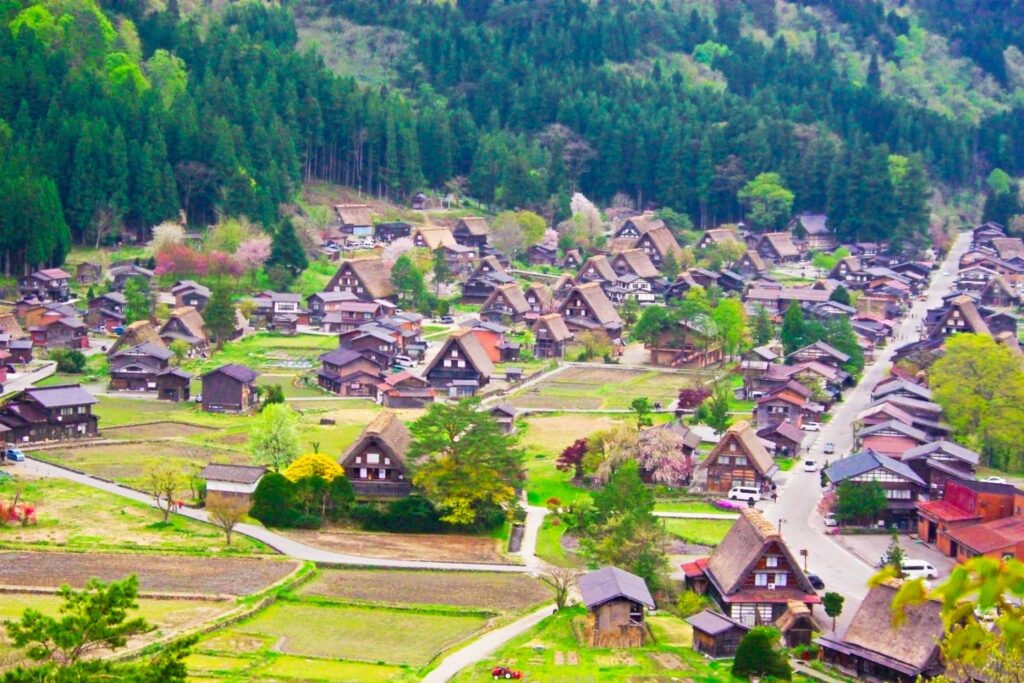
- Routes from Tokyo to Shirakawa-go
- Efficient Travel from Osaka to Shirakawa-go
- Maximizing Your Journey with Travel Passes
- Considering Guided Shirakawa-go Tours
Shirakawa-go offers an unforgettable experience, and the key to a smooth journey is meticulous planning of your transportation. I will guide you through the most efficient routes from major cities like Tokyo and Osaka, explain how travel passes can maximize your value, and detail the benefits of considering guided tours for a truly seamless adventure. Thoughtful preparation ensures a memorable and stress-free trip to this iconic Japanese village.
Routes from Tokyo to Shirakawa-go
Traveling from Tokyo to Shirakawa-go involves a combination of Shinkansen (bullet train) and bus, offering a scenic journey through Japan’s heartland. From my perspective, choosing the right route depends on your travel style and any additional stops you plan to make.
- Via Toyama: Take the Hokuriku Shinkansen from Tokyo Station to Toyama Station, which takes approximately 2 hours 10 minutes to 2 hours 40 minutes. From Toyama Station, transfer to a Nohi Bus or Hokutetsu Bus bound for Shirakawa-go, a journey of about 1 hour 25 minutes. This route is efficient if you prioritize speed and directness.
- Via Kanazawa: Take the Hokuriku Shinkansen from Tokyo Station to Kanazawa Station, typically 2 hours 30 minutes to 3 hours. Then, catch a Nohi Bus or Hokutetsu Bus to Shirakawa-go, taking approximately 1 hour 15 minutes. I often recommend this route, as Kanazawa is a fascinating city with a rich history, making it an excellent stopover destination.
- Via Takayama: Begin by taking the Tokaido Shinkansen from Tokyo Station to Nagoya Station, which is roughly 1 hour 40 minutes to 2 hours. From Nagoya, transfer to the JR Hida Limited Express train to Takayama Station (approximately 2 hours 20 minutes), and finally, take a Nohi Bus from Takayama to Shirakawa-go, a ride of about 50 minutes. While this is the longest option, it allows for a delightful exploration of charming Takayama.

Which route from Tokyo is the best for a first-time visitor like me, considering ease and speed?

For ease and speed, the Kanazawa route is often ideal as it combines a direct Shinkansen ride with a relatively short bus journey, plus Kanazawa is a wonderful place to explore before or after Shirakawa-go.
Each route offers distinct advantages, allowing you to select the best option that aligns with your overall Japan travel itinerary and preferences.
Efficient Travel from Osaka to Shirakawa-go
For travelers starting their Shirakawa-go journey from Osaka, accessing the village primarily involves a convenient combination of train and bus services. My personal experience suggests focusing on the most direct connection to save valuable travel time.
- Via Kanazawa: This is generally the most direct and recommended route from Osaka. Take the Thunderbird Limited Express train from Osaka Station to Kanazawa Station, which typically lasts around 2 hours 40 minutes. Once in Kanazawa, transfer to a Nohi Bus or Hokutetsu Bus to Shirakawa-go, an additional ride of approximately 1 hour 15 minutes.
- Via Nagoya/Takayama: You can also take the Tokaido Shinkansen from Shin-Osaka Station to Nagoya Station (around 50 minutes). From Nagoya, you would follow the same route as from Tokyo via Takayama: the JR Hida Limited Express train to Takayama Station, followed by a Nohi Bus to Shirakawa-go. I find this route significantly longer and less efficient for travelers primarily aiming for Shirakawa-go from Osaka.

What is the most straightforward way to get to Shirakawa-go from Osaka without too many transfers?

The route via Kanazawa using the Thunderbird Limited Express train and then a direct bus is your most straightforward option.
By choosing the most efficient train and bus connections, you will significantly streamline your journey from Osaka to the captivating Gassho-zukuri village.
Maximizing Your Journey with Travel Passes
To make your journey to Shirakawa-go both cost-effective and convenient, considering regional travel passes is a smart strategy. I have found that these passes can provide significant savings and simplify logistics for international visitors.
- Takayama-Hokuriku Area Tourist Pass: This 5-day pass offers exceptional value, covering non-reserved JR trains (including parts of the Hokuriku Shinkansen and Hida Wide View Limited Express) and specific bus lines crucial for reaching Shirakawa-go. It includes bus routes from Kanazawa, Toyama, and Takayama, making it an excellent choice for exploring the wider region. You must hold a “Temporary Visitor” visa to be eligible for this pass.
- Shoryudo Bus Pass: If your primary mode of transportation in the Chubu Hokuriku region (including cities like Nagoya, Gifu, Takayama, Shirakawa-go, and Kanazawa) will be buses, this pass is ideal. It offers unlimited bus travel for either 3 or 5 days, providing flexibility and potential savings.

Are these passes truly worth it, or is it better to buy individual tickets for my trip to Shirakawa-go and other spots?

Travel passes are typically worth it if you plan to visit multiple destinations in the covered region within the pass’s validity period.
I strongly advise checking the specific validity of your chosen pass and making advance reservations for buses, especially during peak seasons or for the highly popular winter light-up event, as reservations are often mandatory.
Considering Guided Shirakawa-go Tours
For many international visitors, a guided tour offers a stress-free and comprehensive way to experience Shirakawa-go, handling all the logistics. From my observations, tours can provide deeper cultural insights and solve the complexities of public transportation, especially for first-time visitors to Japan.
- Day Tours from Nearby Cities: These are very popular and generally last 6 to 8 hours. Common departure points include Kanazawa or Takayama, and tours often combine Shirakawa-go with a visit to nearby Gokayama’s Ainokura village. Longer day tours are available from Nagoya. While technically possible, day trips from Osaka or Tokyo are often very long and tiring due to extensive travel time, typically focusing solely on Shirakawa-go or one other brief stop.
- Private Tours: For ultimate flexibility and personalized experience, you can hire a private car with an English-speaking driver or guide from major cities. While more expensive, this option offers unparalleled convenience and allows for a completely customized itinerary based on your preferences.
- Multi-Day Tours: Several tour operators provide multi-day packages that feature Shirakawa-go as part of a wider exploration of the Japan Alps or the Hokuriku region. These tours can start from Tokyo or Osaka and typically include accommodation and transportation to various scenic spots, offering a comprehensive and relaxed travel experience.

I’m worried about language barriers and navigating public transport in Japan. Would a tour be the best option for me?

Absolutely, a guided tour can significantly simplify your trip logistics and enhance your experience by providing a knowledgeable local guide.
Before booking, I recommend carefully checking what is included in the tour package, such as transportation, entrance fees to specific attractions, and meals, to ensure it aligns with your expectations.
Your Stay in Shirakawa-go: Traditional Homes and Modern Comforts
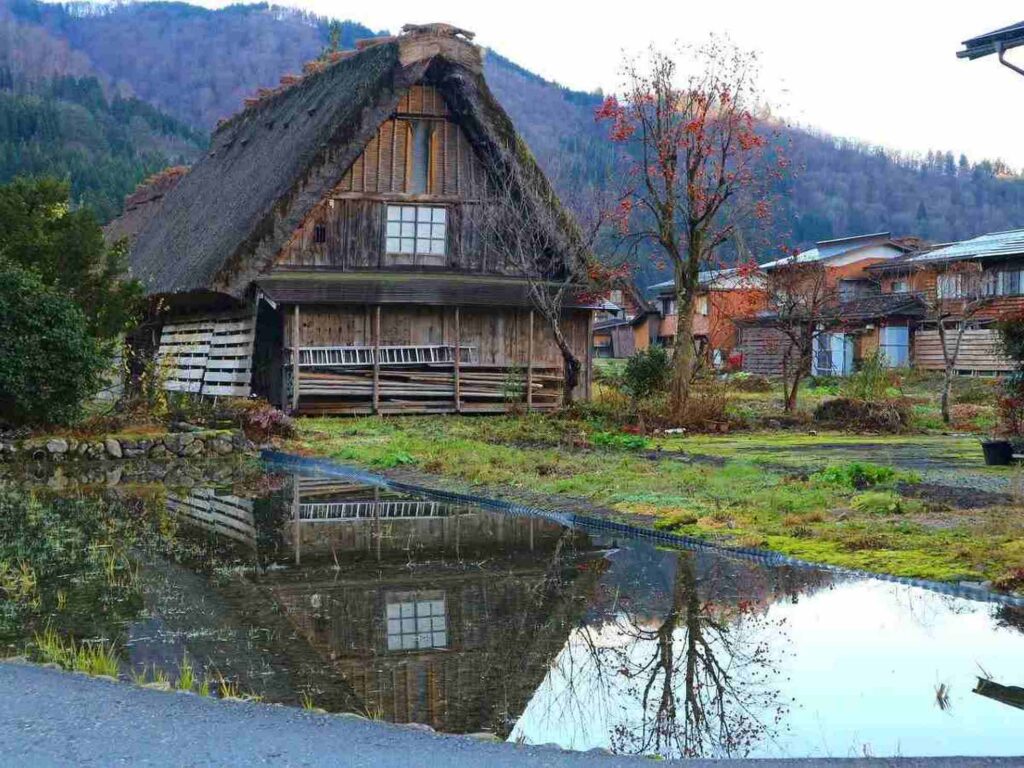
- Experiencing a Traditional Minshuku Stay
- Other Accommodation Options Near Shirakawa-go
- Essential Booking Tips for Your Visit
Shirakawa-go offers an unparalleled opportunity for you to truly immerse yourself in its serene beauty by staying overnight. This choice is crucial for experiencing the village’s peaceful atmosphere after the daytime crowds depart, allowing for a deeper appreciation of its unique charm. Both traditional farmhouses, known as Minshuku, and other modern accommodation options are available to suit your preferences. Regardless of your chosen lodging, securing your stay well in advance is the most important step for a successful visit.
Experiencing a Traditional Minshuku Stay
A Minshuku is a traditional Japanese farmhouse guesthouse, providing an authentic cultural experience where you can connect deeply with local life. You will typically find tatami-matted rooms, often with communal bathrooms, and enjoy delicious traditional Japanese dinners and breakfasts featuring local ingredients. Guests sleep on futon beds laid out on the floor and may even gather around a traditional irori, or sunken hearth. The price for these unique stays usually ranges from 8,000 to 20,000 JPY per person per night, including both dinner and breakfast.
| Aspect | Detail |
|---|---|
| Experience | Tatami-matted rooms, futon beds, communal bathrooms, traditional meals, irori hearth use |
| Availability | Limited numbers, highly popular |
| Booking | Often requires reservations far in advance, sometimes by phone/fax |
| Light-Up Event | Reservations frequently use a lottery system, opening around September |
| Inclusions | Dinner and breakfast typically included |

How can I be sure to get a room at a Minshuku, especially for the light-up?

Early booking and understanding the lottery system for special events are essential.
Staying in a Minshuku is a profoundly unique and memorable way to immerse yourself in the rich culture and hospitality of Shirakawa-go.
Other Accommodation Options Near Shirakawa-go
Beyond the traditional Minshuku, a range of other accommodation options offering more modern amenities are available just outside the main village. These alternatives provide comfort and convenience, allowing you to choose a stay that best fits your needs and preferences. Examples include the hot spring inn Shirakawago no Yu and Toyota Shirakawa-go Shizen Gakko, which provide private facilities. Newer guesthouses such as Way Shirakawa Go or Shirakawago Guest House Kei often offer a contemporary yet welcoming atmosphere, with prices typically ranging from 7,000 to 10,000 JPY per person.
| Type of Accommodation | Key Features | Example Options | Price Range (per person, approximate) |
|---|---|---|---|
| Traditional Minshuku | Authentic cultural immersion, communal facilities | Wada House, Kanda House, Nagase House | 8,000 – 20,000 JPY |
| Hotels/Ryokan | Modern amenities, private bathrooms, hot springs | Shirakawago no Yu, Toyota Shirakawa-go Shizen Gakko | Varies, generally higher |
| Modern Guesthouses | Contemporary feel, shared facilities, better Wi-Fi | Way Shirakawa Go, Shirakawago Guest House Kei | 7,000 – 10,000 JPY |

Are there more modern options with good Wi-Fi?

Yes, several guesthouses and hotels offer modern amenities including better Wi-Fi connectivity.
Ultimately, selecting the right accommodation hinges on balancing your desire for cultural immersion with your comfort preferences and budget, as Shirakawa-go provides choices for every traveler.
Essential Booking Tips for Your Visit
Effectively booking your accommodation in Shirakawa-go is paramount to securing your preferred stay and avoiding disappointment, especially during peak travel seasons and the highly popular winter light-up event. Reservations, particularly for the light-up, open around September, and options sell out quickly due to high demand. Planning ahead allows you to access the best availability and sometimes more favorable rates.
| Platform | Key Features | Official Website |
|---|---|---|
| Booking.com | Extensive hotel options worldwide, user-friendly interface, strong review system | Visit Official Website |
| Trip.com | Comprehensive travel services including flights, hotels, trains, and tours; strong presence in Asia | Visit Official Website |
| Agoda | Specializes in accommodation, particularly in Asia; often offers competitive prices for hotels | Visit Official Website |
| Expedia | A broad range of travel services from flights and hotels to car rentals and activity bookings | Visit Official Website |
| trivago | Hotel price comparison site, helping you find the best deals across various booking platforms | Visit Official Website |
| Tripadvisor | Extensive user reviews and ratings for hotels, restaurants, and attractions; useful for planning and discovering | Visit Official Website |
| Klook | Specializes in tours, activities, and experiences, often offering local insights and convenient mobile booking | Visit Official Website |

When is the best time to book for the winter light-up event?

It is best to book immediately after reservations open, usually around September.
Thorough planning and timely booking are absolutely essential for a stress-free and memorable stay in the charming village of Shirakawa-go.
Exploring Shirakawa-go’s Charm: What to See and Do
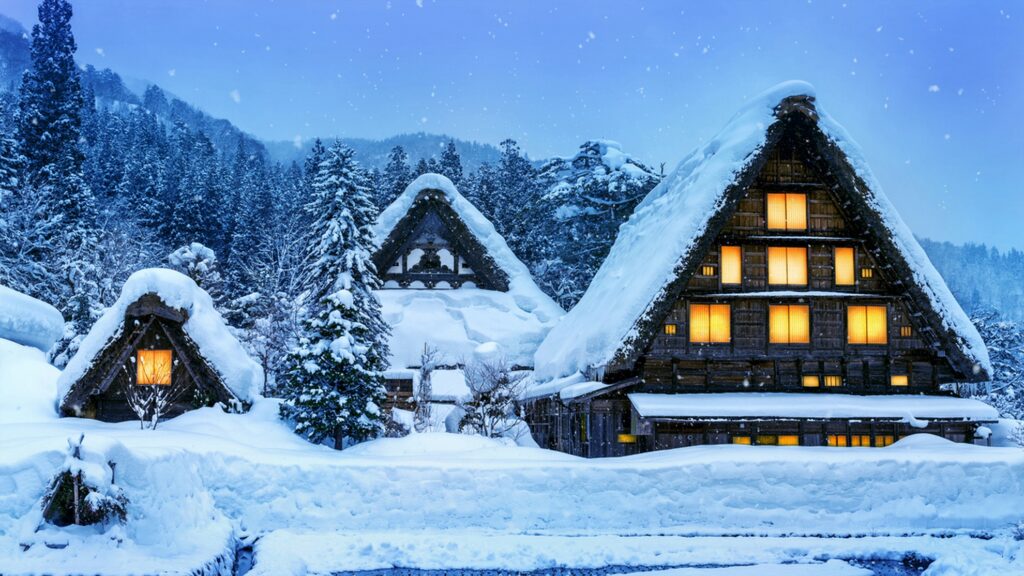
Shirakawa-go is a village best explored on foot, allowing you to appreciate every detail of its unique architecture and picturesque landscape. I will guide you through the must-see attractions in Ogimachi Village, highlight the iconic viewpoints for breathtaking photo opportunities, delve into deeper cultural insights found in its museums and traditional houses, and provide essential tips for navigating the village with a map. By exploring these unique aspects, you will gain a profound understanding of Shirakawa-go’s rich history, enduring culture, and stunning natural beauty.
Must-See Attractions in Ogimachi Village
Ogimachi Village is the largest and most renowned of Shirakawa-go’s Gassho-zukuri villages. As you wander through its quaint lanes, you will marvel at the unique Gassho-zukuri farmhouses, which are traditional homes with steeply pitched, thatched roofs resembling hands clasped in prayer. Several prominent Gassho-zukuri houses are open to the public, offering an intimate glimpse into the traditional lifestyle of the past centuries. For example, the Wada House, one of the largest and oldest, showcases original furniture and tools. The Kanda House is famous for its well-preserved irori (sunken hearth), demonstrating how smoke preserved the timber over time. The Nagase House, a former doctor’s residence, features intriguing medical instruments from its past.

What makes each traditional house unique, and what can I expect to see inside?

Each house offers a distinct window into historical life, allowing you to directly experience the diverse aspects of traditional living in Shirakawa-go.
| House | Highlight | Entrance Fee (JPY) |
|---|---|---|
| Wada House | Largest, oldest, original furniture and tools | 400 |
| Kanda House | Well-preserved irori, smoke-blackened interior | 400 |
| Nagase House | Former doctor’s residence, medical instruments | 300 |
Visiting these homes provides a deep connection to Shirakawa-go’s enduring history and the resilience of its unique culture.
Iconic Viewpoints and Photo Opportunities
For the most breathtaking and iconic panoramic view of Shirakawa-go’s Ogimachi village, you will want to visit the Shiroyama Tenshukaku (Ogimachi Castle Observation Deck). From this elevated position, the Gassho-zukuri houses appear like miniature models nestled beautifully within the landscape, creating an unparalleled photo opportunity, especially captivating in winter. Access to the observation deck is possible via a walking path, which is a steep but rewarding 20 to 30-minute climb from the village. Alternatively, a convenient shuttle bus runs frequently from near the bus terminal, costing 300 JPY one-way (cash only). This shuttle bus is particularly useful during snowy conditions when the walking path might be less accessible.

When is the best time to visit the observation deck for capturing the perfect photo?

Early morning or late afternoon often provide softer light and fewer crowds, ideal for capturing the most stunning photographs.
Photography Tips
- Best lighting during early morning or late afternoon
- Utilize a wide-angle lens for panoramic shots
- In winter, bring extra batteries due to cold affecting camera performance
- Be mindful of other visitors when taking photos
This iconic viewpoint will undoubtedly be a highlight of your Shirakawa-go journey, offering memories and photographs to cherish forever.
Deeper Cultural Insights: Museums and Houses
Beyond simply admiring the exteriors, Shirakawa-go offers opportunities to gain deeper cultural insights by visiting its fascinating museums and traditional houses. These sites meticulously preserve and showcase the history, architecture, and daily life of the region’s inhabitants. The Gassho-zukuri Minkaen Open-Air Museum, located across the Deai Suspension Bridge, features 25 relocated Gassho-zukuri houses, providing a comprehensive understanding of their unique construction and varied historical layouts. You can sometimes even participate in traditional craft activities here, like soba noodle making, offering a hands-on cultural experience. Entry costs around 600 JPY. Another significant site is Myozenji Temple & Museum, a unique Buddhist temple with a Gassho-zukuri main hall and a bell tower, priced at approximately 300 JPY for entry. The Tajima House Museum of Silk Culture, for about 200 JPY, educates visitors on the traditional sericulture industry that was vital to the village’s economy.

Is there a recommended route to efficiently visit these cultural sites?

These sites are dotted throughout Ogimachi village, and a well-planned route using a map will ensure an efficient and enriching visit.
| Cultural Site | Overview | Entrance Fee (JPY) |
|---|---|---|
| Gassho-zukuri Minkaen | 25 relocated Gassho-zukuri homes, craft activities | 600 |
| Myozenji Temple & Museum | Unique Buddhist temple with Gassho-zukuri features | 300 |
| Tajima House Museum of Silk Culture | Learn about traditional sericulture industry | 200 |
Exploring these various sites allows you to witness the rich tapestry of Shirakawa-go’s past life, enduring history, and remarkable craftsmanship firsthand.
Navigating the Village with a Map
To efficiently explore Shirakawa-go and ensure you do not miss any of its charming sights, understanding and utilizing a Shirakawa-go map is absolutely essential. A physical map is highly recommended and readily available at the Shirakawa-go Bus Terminal or the Tourist Information Center upon your arrival. The village is remarkably pedestrian-friendly, especially between 9:00 AM and 4:00 PM when sightseeing vehicles are generally restricted from the main village area. You will find that most attractions are within easy walking distance.

Can I rely on smartphone map applications, or is a physical map necessary for navigation?

While online maps are convenient, cellular reception can be unstable in some areas, so I highly recommend always carrying a physical map as a backup.
Essential Navigation Tips
- Always carry a physical map, even with smartphone apps
- Most of the village is easily walkable; plan routes based on your interests
- Note shuttle bus stops for the observation deck and other key points
- Be aware of designated pedestrian zones and vehicle-restricted areas
- Utilize the Tourist Information Center for real-time advice or directions
Familiarizing yourself with the village layout beforehand and locating key attractions on your Shirakawa-go map will ensure you make the most of your visit to this incredible World Heritage site.
Unveiling Shirakawa-go’s Magical Winter and Booking Tools
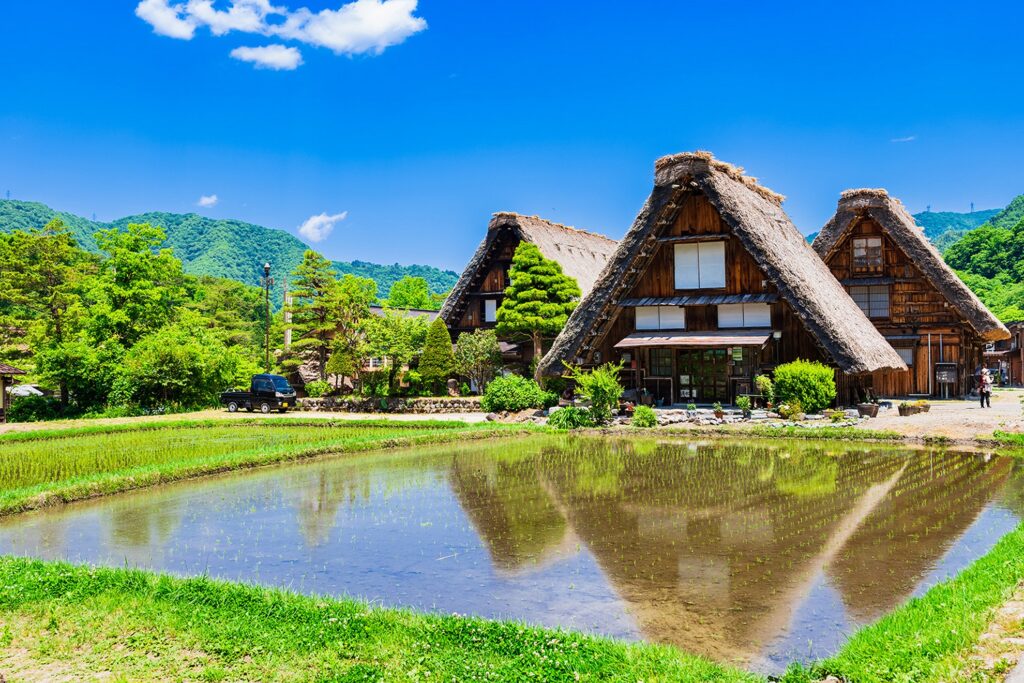
Experiencing Shirakawa-go during its winter light-up is arguably the most magical way to encounter this UNESCO World Heritage site, and securing your spot and stay requires thoughtful planning. This section guides you through the unparalleled beauty of Shirakawa-go in winter, provides an essential guide to the light-up event details, and shows you why comparing travel booking sites and using the top online platforms for your Shirakawa-go trip is crucial. By understanding these key aspects, you will be well-equipped to experience the best of Shirakawa-go and easily arrange your unforgettable journey.
Experiencing Shirakawa-go in Winter
Shirakawa-go in winter transforms into a breathtaking snowscape, offering a unique and memorable experience. The village experiences extremely cold temperatures, often falling well below freezing, and heavy snowfall is common, creating that iconic picturesque view. This season typically lasts from December to February.

How should I prepare for the cold and snow in Shirakawa-go?

Layered clothing and waterproof, non-slip boots are absolutely essential for staying warm and safe.
- Dress warmly: Wear multiple layers, thermal underwear, a thick, waterproof coat, a warm hat, gloves, and a scarf.
- Wear non-slip footwear: The paths can be very icy and snowy; waterproof boots with good grip are a must.
Preparing with appropriate gear ensures you can fully enjoy the enchanting beauty of Shirakawa-go’s winter wonderland comfortably and safely.
Essential Guide to the Light-Up Event
The Shirakawa-go Light-Up event is the most sought-after experience, turning the snow-covered village into an ethereal, glowing spectacle. This highly anticipated event takes place on select evenings, with confirmed dates for 2026 being January 12, 18, 25, and February 1. Access is strictly by advance reservation, with booking typically opening in early October for tours.

How can I secure my spot for the Shirakawa-go light-up event?

Booking a special tour or reserving parking/accommodation well in advance is crucial, as spontaneous visits are not permitted.
| Access Method | Description | Booking Details |
|---|---|---|
| Tour Buses | The primary way to attend, with special light-up tours available from nearby cities like Takayama, Kanazawa, Toyama, Nagoya, Tokyo, and Osaka. These tours include transportation and guaranteed entry. | Booking usually opens in early October. |
| Pre-booked Parking | Limited parking slots for private cars must be reserved in advance. Without a pre-booked slot, private cars are not allowed into the village during light-up hours. | Often via a lottery system opening around September. |
| Overnight Stays | A very limited number of guests staying in specific minshuku may have special access privileges to view the light-up from inside the village. | Often through a lottery system for reservations, opening around September. |
| Observation Deck Access | Access to the iconic Shiroyama Tenshukaku Observation Deck during the light-up is highly restricted and often limited to those on specific tours or with special permits due to capacity limitations. | Check tour inclusions or official announcements for specific access details. |
Due to its immense popularity, securing your place for the light-up event requires early and meticulous planning, primarily through special tours or lottery-based reservations.
Why Compare Travel Booking Sites
Comparing various travel booking sites is important for finding the best deals and the most suitable options for your Shirakawa-go trip. Each platform offers different advantages, from diverse accommodation types to specific tour packages and competitive pricing, making a thorough comparison beneficial. By carefully evaluating what each site offers, you can tailor your travel arrangements to perfectly match your preferences and budget.

Why should I bother comparing so many travel booking sites?

Comparing sites helps you find the best deals, diverse options, and reliable information for your trip.
Taking the time to compare ensures you make an informed decision, potentially saving money and gaining access to unique travel experiences tailored to your needs. This effort will ultimately enhance the overall satisfaction of your Shirakawa-go adventure.
Top Online Platforms for Your Shirakawa-go Trip
To efficiently plan your Shirakawa-go trip, utilizing top online platforms is highly recommended for exploring travel plans on major travel websites. These platforms provide a vast array of options for accommodations, transportation, and tours, making it easy to compare and book all aspects of your journey in one place. Here are some of the most widely used platforms:

Which online platforms are best for booking my Shirakawa-go trip?

Major online travel agencies like Booking.com, Trip.com, and Agoda offer extensive options for flights, accommodations, and tours.
| Platform | Key Features | Official Website |
|---|---|---|
| Booking.com | Extensive hotel options worldwide, user-friendly interface, strong review system | Visit Official Website |
| Trip.com | Comprehensive travel services including flights, hotels, trains, and tours; strong presence in Asia | Visit Official Website |
| Agoda | Specializes in accommodation, particularly in Asia; often offers competitive prices for hotels | Visit Official Website |
| Expedia | A broad range of travel services from flights and hotels to car rentals and activity bookings | Visit Official Website |
| trivago | Hotel price comparison site, helping you find the best deals across various booking platforms | Visit Official Website |
| Tripadvisor | Extensive user reviews and ratings for hotels, restaurants, and attractions; useful for planning and discovering | Visit Official Website |
| Klook | Specializes in tours, activities, and experiences, often offering local insights and convenient mobile booking | Visit Official Website |
Leveraging these leading online platforms enables you to effectively research and book the perfect travel arrangements for your Shirakawa-go journey.
Shirakawa-go: Your Ultimate Travel Guide for International Visitors – Frequently Asked Questions (FAQ)
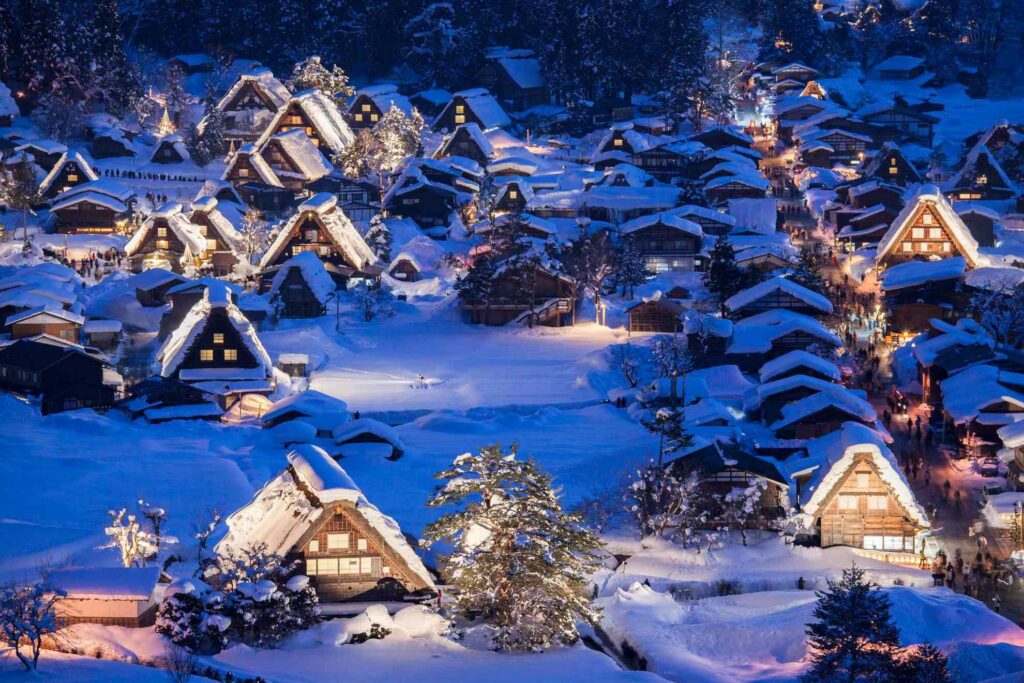
- QQ: When visiting Shirakawa-go, how much cash should I prepare, or are credit cards generally sufficient?
- A
A: While major hotels and tour companies in the broader region do accept credit cards, many smaller shops, restaurants, and some attractions within Shirakawa-go village itself primarily operate on a cash-only basis. I advise carrying a sufficient amount of Japanese Yen (JPY) for your daily expenses, snacks, souvenirs, and smaller entrance fees. A money exchange facility is available at the Shirakawa-go Bus Terminal, should you need to convert currency.
- QQ: During the Shirakawa-go Winter Light-Up event, are there any tips to enjoy the scenery while avoiding extreme crowds?
- A
A: The Shirakawa-go Light-Up is incredibly popular, so managing crowds can be a challenge. To enjoy the scenery with a bit more ease, consider arriving slightly before the lights turn on (around 17:30) or staying until closer to the end of the event (19:30). Booking a specific light-up tour often provides structured access, which can streamline your experience. If staying overnight, some accommodations offer exclusive or privileged viewing spots for their guests. Focusing on less central areas or finding a slightly elevated vantage point away from the main observation deck might also provide a more peaceful experience. Always be patient and prepared for large gatherings.
- QQ: Are there specific times or spots around Shirakawa-go where I can enjoy beautiful autumn foliage?
- A
A: Absolutely. While Shirakawa-go is famous for its winter scenery, the autumn foliage season, typically from late October to early November, offers breathtaking views. The village itself, with its Gassho-zukuri houses surrounded by vibrant reds, oranges, and yellows, is picturesque. For nearby spots, consider combining your visit with Takayama, which also boasts stunning autumn colors. The roads leading to Shirakawa-go, especially those passing through mountainous areas, become incredibly scenic during this time. The nearby Gokayama villages, another UNESCO World Heritage site, also offer beautiful autumn landscapes and a quieter experience.
- QQ: Can I find vegetarian or vegan meal options in Shirakawa-go?
- A
A: Finding dedicated vegetarian or vegan restaurants can be challenging in rural areas like Shirakawa-go, as traditional Japanese cuisine often uses dashi (broth made from fish flakes) or other animal products. However, some restaurants may offer dishes that can be made vegetarian or vegan upon request, such as certain soba (buckwheat noodles) or tofu dishes, and local mountain vegetables are common. I recommend communicating your dietary needs clearly, perhaps by using a translation app or a written note in Japanese. Bringing some of your own non-perishable snacks is also a practical consideration for specific dietary requirements.
- QQ: What makes Shirakawa-go's Gassho-zukuri houses so unique, and which ones should I visit?
- A
A: The Gassho-zukuri farmhouses are unique due to their steeply pitched, thatched roofs designed to withstand heavy snowfall without nails, using intricate wooden joinery. Their multi-story interiors were also traditionally used for sericulture (silkworm cultivation). For visitors, I highly recommend exploring the Wada House, one of the largest and oldest, which provides a glimpse into the lives of past village headmen and silk merchants with original furnishings. The Kanda House is another must-see, known for its preserved irori (sunken hearth) and the unique smoke-blackened interior that helped preserve the timber. These houses offer invaluable insights into the architecture and daily life of the past.
- QQ: Is public Wi-Fi available within Shirakawa-go village?
- A
A: Yes, free Wi-Fi is generally available at key locations in Shirakawa-go. You can usually find it at the Shirakawa-go Tourist Information Center and at some larger accommodations. However, connectivity can be limited or spotty in smaller, more remote parts of the village or inside older structures. For consistent internet access throughout your visit, especially for navigation or urgent communications, I highly recommend either renting a portable pocket Wi-Fi device or purchasing a local SIM card before your trip. This ensures seamless connectivity as you explore this beautiful World Heritage site.
Shirakawa-go: Summary of Your Ultimate Travel Guide for International Visitors
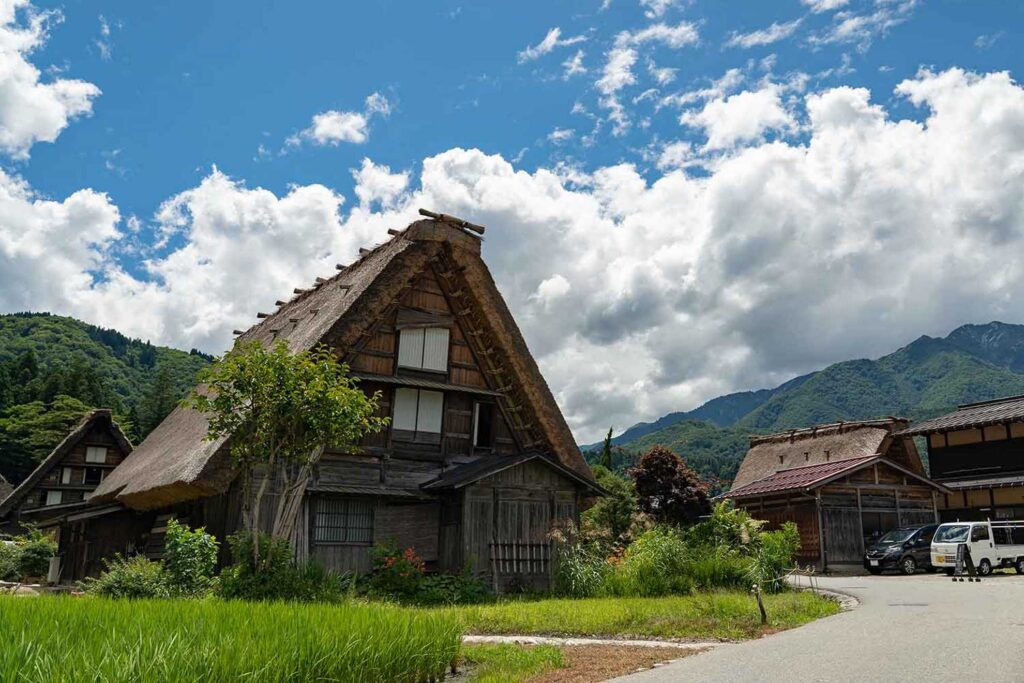
Shirakawa-go, a UNESCO World Heritage site, is a beautiful place characterized by its unique Gassho-zukuri farmhouses. This guide has comprehensively presented everything international visitors need to plan an unforgettable trip to Shirakawa-go, including access methods from Tokyo and Osaka, a wide range of accommodation options, fascinating sights, and crucial information, especially regarding the winter scenery and popular light-up event. Please also review the key points of this page summarized below.
- Shirakawa-go’s Gassho-zukuri farmhouses, a UNESCO World Heritage site, symbolize traditional Japanese beauty and culture
- This guide assists international visitors in concrete planning to fully enjoy Shirakawa-go
- Detailed explanations of optimal access methods from major cities like Tokyo and Osaka, and convenient travel passes
- Introduction to accommodation choices, from traditional “minshuku” to modern facilities, along with booking tips
- Deep dive into the charm of Shirakawa-go in winter, cold weather preparations, and precautions for snowy conditions
- The fantastical winter light-up event is strictly reservation-only; prior tour bookings or accommodation secures access
- Ogimachi Village, a treasure trove of Gassho-zukuri houses, allows internal viewing at public houses like Wada House and Kanda House
- Shiroyama Tenshukaku Observation Deck offers breathtaking panoramic views of Shirakawa-go, an excellent photo spot
- Rich cultural and historical insights are available at museums and facilities like Gassho-zukuri Minkaen and Myozenji Temple
- The village is walkable; utilizing a map helps efficiently navigate key spots
- The architectural techniques of Gassho-zukuri houses built without nails, embodying the “Yui” spirit of cooperation, and the wisdom of the community are must-sees
- Shirakawa-go showcases different expressions each season, but its snow-covered winter scenery is globally renowned
- Guided tours are an effective option for visitors concerned about complex transportation
- Utilizing major travel booking sites (Booking.com, Trip.com, Agoda, etc.) to compare and find optimal plans
- Importance of practical preparations for a comfortable trip, such as carrying local currency and making thorough advance reservations
Based on this information, concretely plan your trip to Shirakawa-go and enjoy an unforgettable travel experience, immersing yourself in Japan’s traditional culture and the beautiful Gassho-zukuri scenery.
